The REAC was first used in 1946 for “Project Cyclone”, research on rocket guidance systems, forerunners of today’s cruse missiles. The computers were also used for fire control systems. (As I recall, there were anti-aircraft turrets in the building as well as the rear gun mount section of a B-25 and an actual submarine in the basement, ostensibly for inertial guidance system work that led to the Nautilus being able to run under water for a long duration, using gyros for tracking instead of sextants. – Michael Wolfe) The first articles after declassification in 1950, were in the The New York Times of April 16, 1950 section F, page 11: 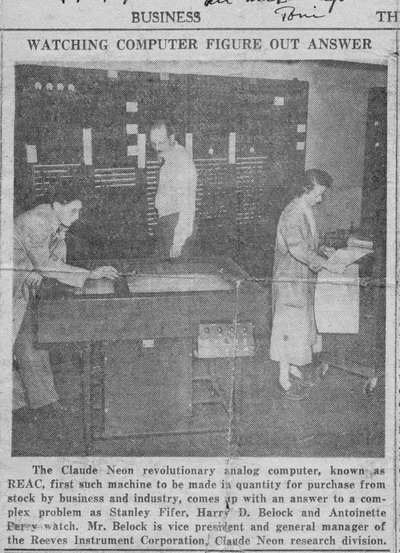
The woman on the right is Antoinette Weston Wolfe, code named “Perry”.
A Time magazine article of August 7, 1950 was entitled “The House on 91st Street”
Real rocket tests, such as last week's at Cocoa are expensive items in any nation's budget. The missile itself, including development cost, may represent many hundred thousand dollars. To follow its flight requires a network of observation posts with radar, telescopes, radio locators and other intricate instruments specially designed for the purpose. Much cheaper are the "test flights" performed for the Navy by the Reeves Instrument Corp., subsidiary of Claude Neon Inc. Reeves's rockets do not fly out of the heavily guarded laboratory on Manhattan's 91st Street. They are only electronic signals in an analogue computer's brain, but they have taught the Navy more about guided missiles than many real flights would. Designing guided missiles is vastly more difficult than designing "inhabited" aircraft. A new model airplane has a pilot on board to correct its maiden errors, and (if all goes well) to bring it down intact for study and improvement. Guided missiles depend on artificial brains which need to be tested themselves, and they are seldom recovered except as a mass of wreckage. To test a new missile by the cut-and-try method of actual flight is expensive not only in money, but also in more precious time. In 1946, the Office of Naval Research asked Reeves Instrument to set up a combination of its analogue computers* which would be versatile enough to simulate the flight of any guided missile. "Project Cyclone" operated in secret until last week when the Navy declassified some of its activities. The Knobs Know. The test range of Project Cyclone is a large room lined with tall, many-knobbed cabinets full of electronic apparatus. To simulate a missile, either actual or still-to-be-built, the knobs are set at positions corresponding to all of its characteristics. Some knobs take care of its air drag and the thrust of its rocket motor. Others express the action of its gyroscopic controls. Others account for the motion of its launching site (such as a naval vessel) and of its target (such as an enemy airplane). When all the knobs are set, the operator presses a button. The brain of the computer starts thinking electronically, weighing all the forces that will affect the flight of the missile. When the machinery stops, the whole story of the flight is drawn as a curve on a sheet of paper. If the rocket misbehaved (went out of control, veered sideways, missed the target), the reason for the error can be found and corrected on the next flight. According to Reeves and the Navy, this method is far more effective than building real missiles and firing them into real air. When the simulated flights turn out well, a metal-and-fire missile can be built from figures supplied by the settings of the computer's knobs. Rocket Seeker. Project Cyclone has solved many problems before they ever came up in actuality. It advised the Navy, for instance, not to try to launch certain jet fighters from the deck of a pitching carrier. The computer proved that they were much too likely to go in the drink. It worked out the "hydrodynamic" behavior of unbuilt submarines. It predicted the speed at which the wings of new aircraft would begin to flutter dangerously. Project Cyclone is now working on a rocket missile that will seek out enemy rockets. It must find them by radar, calculate their course and speed; then set its own course to intercept and destroy them. The job involves mathematical problems so complex that human brains could work for years without even denting them. But Project Cyclone's men are sure it can be done in the House on 91st Street. *Digital computers (giant brains) deal only in numbers. Analogue computers, not quite as accurate but more flexible, deal directly with such values as distance, speed, direction, etc.
http://www.time.com/time/magazine/article/0,9171,812935,00.html
Later a longer article appeared in “Our Navy” October 1951 also entitled “The House on 91st Street”
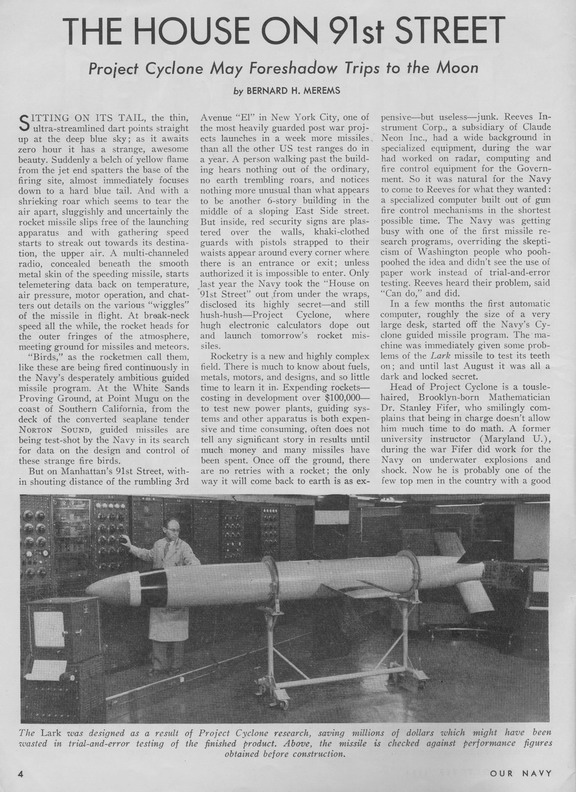
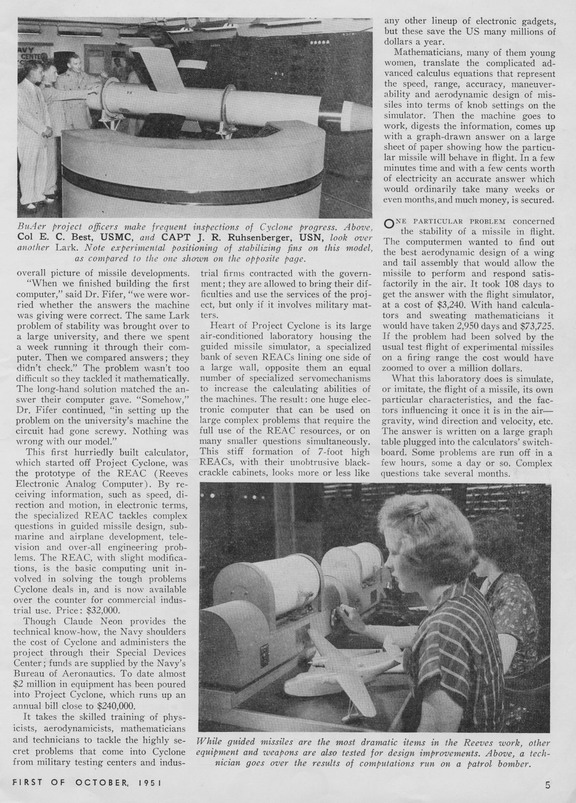
Antoinette Weston Wolfe
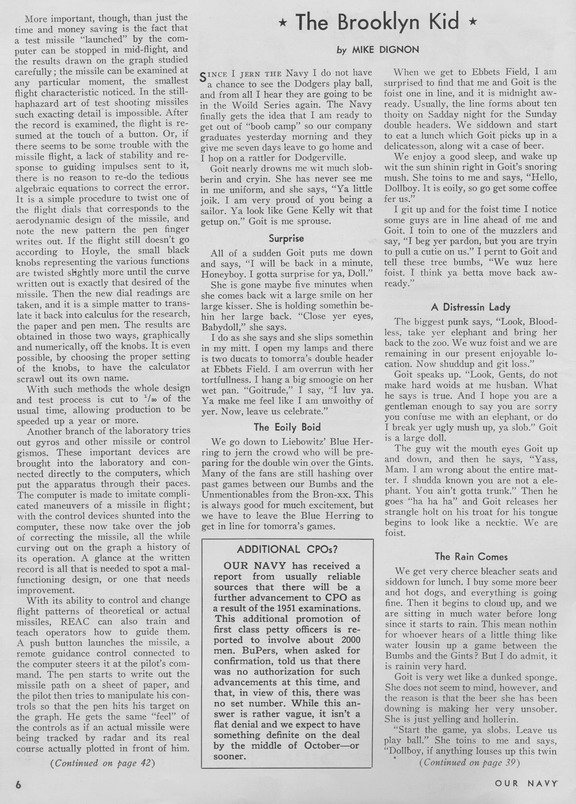
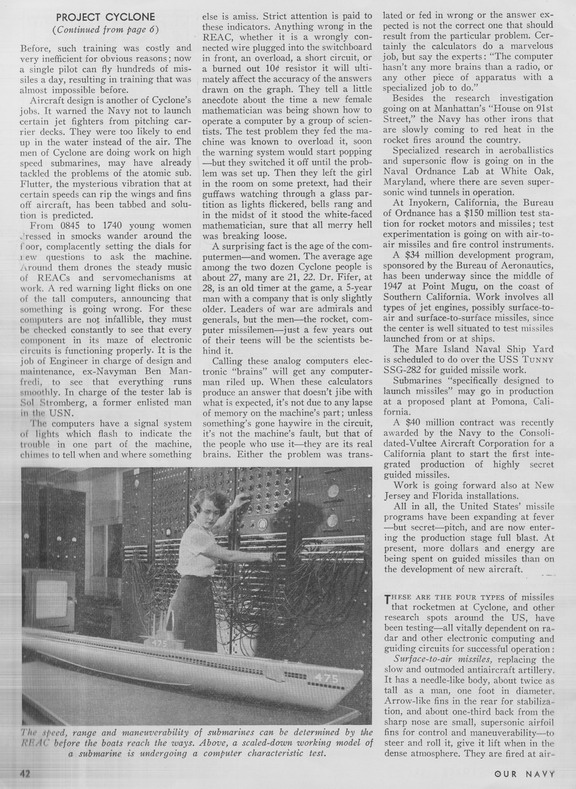
Antoinette Weston Wolfe
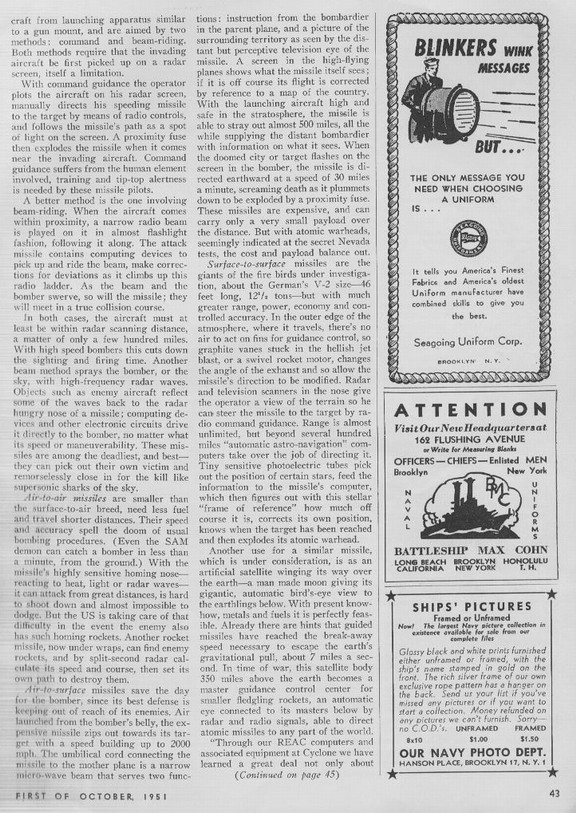
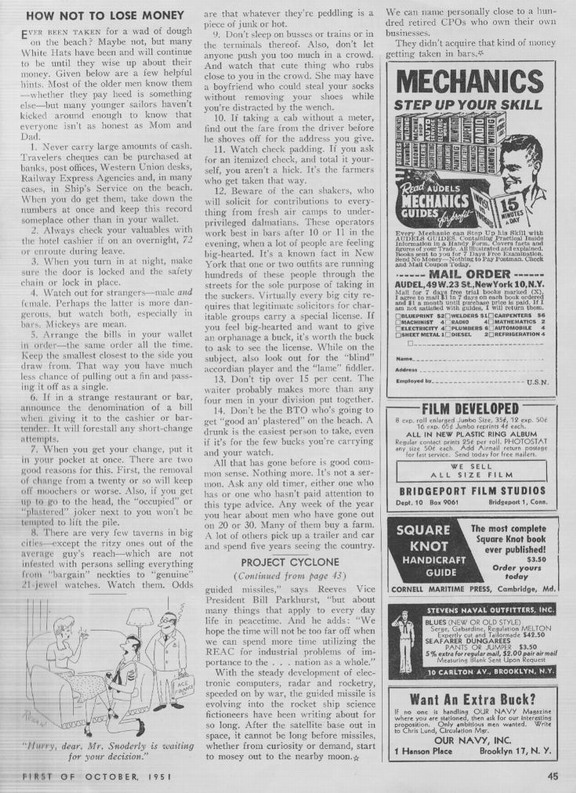
Related Links:
“A great disappearing act: the electronic analog computer” by Chris Bissell
http://www.ieee.org/portal/cms_docs_iportals/iportals/aboutus/history_center/conferences/che2004/Bissell.pdf Reeves Instrument Company
http://dcoward.best.vwh.net/analog/rico.htm |







